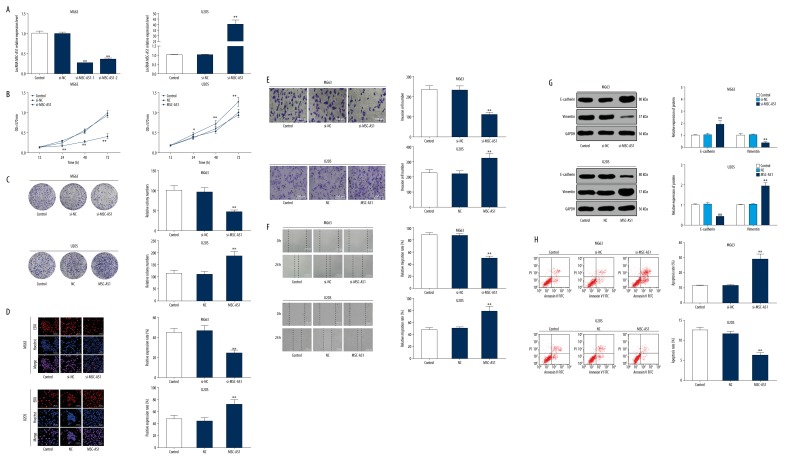Figure 2.
Silencing of lncRNA MSC-AS1 reduced OS cell proliferation, invasion, migration and EMT and increased OS cell apoptosis. (A) lncRNA MSC-AS1 expression in transfected OS cells MG63 and U2OS was assessed with RT-qPCR. (B) OS cell viability in all groups was detected by MTT assay. (C) Colony formation ability in OS cells from all groups was measured. (D) DNA replication in all groups was detected by EdU assay. (E) OS cell invasion in all groups was assessed with Transwell assay. (F) OS cell migration in all groups was verified by scratch test. (G) EMT-related protein expression in all groups was measured by Western blot analysis. (H) OS cell apoptosis in all groups was assessed with flow cytometry. Compared with control group, * p<0.05, ** p<0.01. The experiments were performed 3 times; one-way ANOVA and Tukey’s multiple comparisons test were applied to determine (A, C–F, H), and two-way ANOVA and Tukey’s multiple comparisons test were applied to determine (B, G). lncRNA – long non-coding RNA; EMT – epithelial-mesenchymal transition; OS – osteosarcoma; RT-qPCR – reverse transcription-quantitative polymerase chain reaction; MTT – 3-(4, 5-dimethylthiazol-2-yl)-2, 5-diphenyltetrazolium bromide; EdU – 5-ethynyl-2′-deoxyuridine; ANOVA – analysis of variance.

